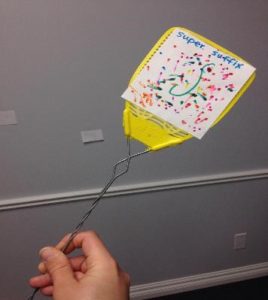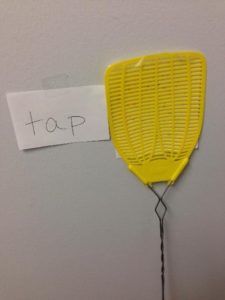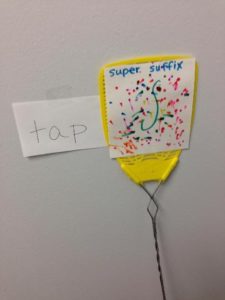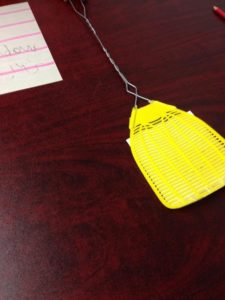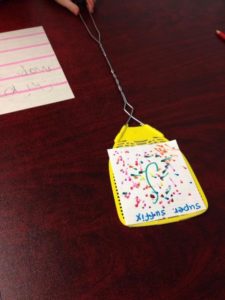Multisensory Monday: Base Words Meet Super Suffix -S!
Posted by Audrey Bon on 18th Mar 2018
Reading and spelling CVC words with suffix -s at the end can be challenging for some students. Words such as “taps” or “bugs” can be confusing because the student needs to first ignore the suffix -s, figure out the base word, and then add the suffix -s back on. The Super Suffix -S activity is a great way to practice this skill with your students!
Material Needed
Paper (white paper or construction paper), flyswatters or popsicle sticks, index cards
Preparation
Write CVC words such as hat, dot, can, lap, etc. on index cards and post them around the room. I used words from the Phonics First Curriculum Guide, Lessons 2-1 and 2-5. Only write the CVC word, leaving off the suffix -s ending. For example, if the word is cats, write “cat” on the index card.
Give the students a small piece of paper, one per student. Have the students draw a large “S” in the middle. They can write “Super Suffix” along the top and then decorate around the S. Then tape each Super Suffix -S to a popsicle stick or flyswatter.
Play the Game
Now it’s time for some fun! Send students on a scavenger hunt. Students put their Super Suffix -S next to a CVC word on the wall. First, students turn the flyswatter/popsicle stick around so the Super Suffix -S is hidden. Second, they read the CVC word. Third, they turn the Super Suffix -S over and read the word with the suffix.
Supplement During Dictation
Students can continue using the Super Suffix -S during dictation. Have students turn the flyswatter/popsicle stick over so the -S is hidden. The teachers says the dictation word. Students pound and tap the base word without the suffix and write it down. Then the teacher says, “add suffix -s”. Students turn the Super Suffix -S over and write the suffix. This is a great visual reminder for students during dictation. You can also elaborate by explaining how suffix -s changes the meaning of the base word.
Practicing suffix skills using a multisensory tool such as this helps students both in reading and spelling. We can elaborate on this activity by explaining how suffix -s changes the meaning of the base word. For example, “cat” is singular and “cats” is plural.
Enjoy!
Written by,
Audrey Bon, A.B.Ed.
Audrey is a tutor at Brainspring Learning Center in Plymouth, and an Instructor at Brainspring Educator Academy
Bring Brainspring Orton-Gillingham multisensory instruction to your classrooms, transforming struggling K-12 readers into skilled learners through our effective, evidenced-based approach.
For more information please visit brainspring.com or call 1-800 732 3211

